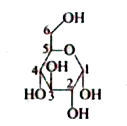The equation α=D−d(n−1)d is correctly matched for: (α is the degree of dissociation, D and d are the vapour densities before and after dissociation, respectively).




The correct Answer is:B
To solve the problem regarding the equation α=D−d(n−1)d, we need to understand the components involved in this equation and how they relate to the degree of dissociation in a chemical reaction.
1. Understanding the Variables:
- α is the degree of dissociation, which indicates the fraction of the original substance that has dissociated into products.
- D is the vapor density of the gas before dissociation.
- d is the vapor density of the gas after dissociation.
- n is the sum of the stoichiometric coefficients of the products formed in the reaction.
2. Setting Up the Equation:
- The equation given is α=D−d(n−1)d.
- This equation is derived based on the changes in vapor density before and after the dissociation of a substance.
3. Analyzing the Stoichiometric Coefficients:
- To use this equation, we need to determine the value of n for the specific reaction we are analyzing.
- The value of n is crucial because it represents how many moles of products are formed from the dissociation of one mole of reactant.
4. Evaluating the Options:
- We will evaluate each option provided (A, B, C, D) to find the correct value of n that satisfies the equation.
- For each option, calculate the sum of the stoichiometric coefficients of the products.
5. Calculating for Each Option:
- Option A: If the products have stoichiometric coefficients of n2 and n3, then n=n2+n3=5n6, which is not equal to n.
- Option B: If the products have stoichiometric coefficients of n3 and 2n3, then n=n3+2n3=2n, which is valid.
- Option C: If the products have stoichiometric coefficients of 3n4, then n=3n4, which is not equal to n.
- Option D: If the products have stoichiometric coefficients of n2 and n, then n=n2+n=3n2, which is again not equal to n.
6. Conclusion:
- The only option that satisfies the equation is Option B, where the sum of the stoichiometric coefficients equals n.
Final Answer:
The equation α=D−d(n−1)d is correctly matched for Option B.
- α is the degree of dissociation, which indicates the fraction of the original substance that has dissociated into products.
- D is the vapor density of the gas before dissociation.
- d is the vapor density of the gas after dissociation.
- n is the sum of the stoichiometric coefficients of the products formed in the reaction.
- The equation given is α=D−d(n−1)d.
- This equation is derived based on the changes in vapor density before and after the dissociation of a substance.
- To use this equation, we need to determine the value of n for the specific reaction we are analyzing.
- The value of n is crucial because it represents how many moles of products are formed from the dissociation of one mole of reactant.
- We will evaluate each option provided (A, B, C, D) to find the correct value of n that satisfies the equation.
- For each option, calculate the sum of the stoichiometric coefficients of the products.
- Option A: If the products have stoichiometric coefficients of n2 and n3, then n=n2+n3=5n6, which is not equal to n.
- Option B: If the products have stoichiometric coefficients of n3 and 2n3, then n=n3+2n3=2n, which is valid.
- Option C: If the products have stoichiometric coefficients of 3n4, then n=3n4, which is not equal to n.
- Option D: If the products have stoichiometric coefficients of n2 and n, then n=n2+n=3n2, which is again not equal to n.
- The only option that satisfies the equation is Option B, where the sum of the stoichiometric coefficients equals n.
The equation α=D−d(n−1)d is correctly matched for Option B.
Topper's Solved these Questions
- BOOK - CENGAGE CHEMISTRY ENGLISHCHAPTER - CHEMICAL EQUILIBRIUMEXERCISE - Concept Applicationexercise 7.153videos
CHEMICAL EQUILIBRIUM
- BOOK - CENGAGE CHEMISTRY ENGLISHCHAPTER - CHEMICAL EQUILIBRIUMEXERCISE - Ex 7.240videos
CHEMICAL EQUILIBRIUM
- BOOK - CENGAGE CHEMISTRY ENGLISHCHAPTER - CHEMICAL BONDING AND MOLECULAR STRUCTUREEXERCISE - Archives Subjective15videos
CHEMICAL BONDING AND MOLECULAR STRUCTURE
- BOOK - CENGAGE CHEMISTRY ENGLISHCHAPTER - CLASSIFICATION AND NOMENCLATURE OF ORGANIC COMPOUNDSEXERCISE - Analytical and Descriptive Type3videos
CLASSIFICATION AND NOMENCLATURE OF ORGANIC COMPOUNDS
Similar Questions
Knowledge Check
- Question 1 - Select One
In α-D-Glucose, the anomeric carbon is at :
 A1B2C4D5
A1B2C4D5
In the dissociation of N2O4 into NO2,(1+α) values with the vapour densities ratio (Dd) is given by: [α degree of dissociation, D-vapour density before dissociation, d-vapour density after dissociation]
View SolutionWhat is the percentage dissociaiton of a substance if its vapour densities before and after dissociation are 30 and 15 respectively and I mole of its dissociation to 3 moles of products ?
View SolutionArrange the following:
H-H, D-D and F- F in order of increasing bond dissociation enthalpy.View SolutionThe degree of dissociation α of a week electrolyte is
where n is the number of ions given by 1mol of electrolyte.View SolutionPolymer of α-D glucose is
View SolutionFor the dissociation of PCl5 into PCl3 and Cl2 in gaseous phase reaction , if d is the observed vapour density and D the theoretical vapour density with 'α' as degree of dissociation ,variaton of D/d with 'α' is given by ?
View SolutionIf DTandDo are the theoretical and observed vapour densities at a definite temperature and α be the degree of dissociation of a substance ,then ,α in the terms of Do,DT and n (number of moles of products formed from 1 mole reactant ) is calculated by the formula :
View Solution

